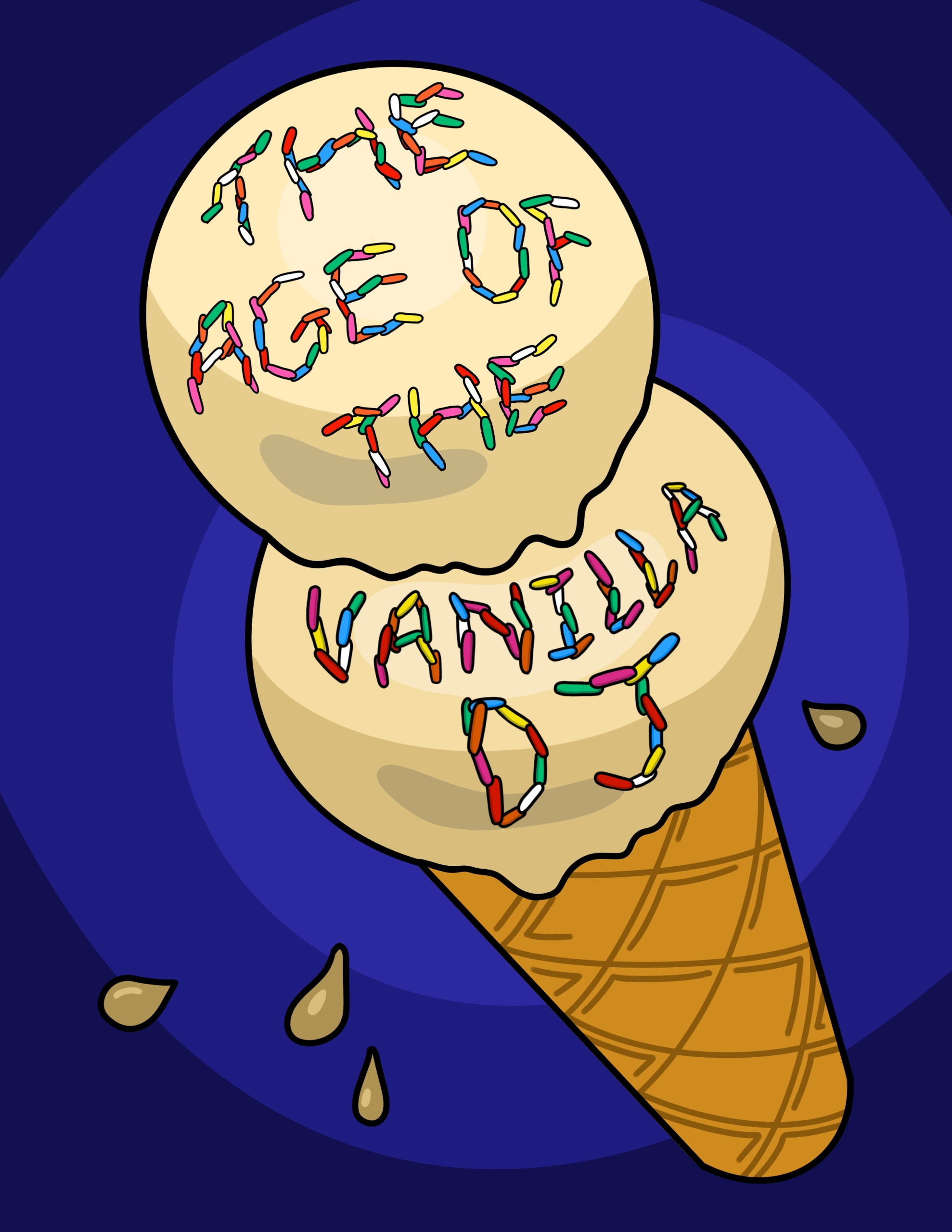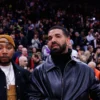
Can I admit something embarrassing?
I’m fascinated by the “Funk Wav Bounces” series. On the one hand, Calvin Harris’s duology of beach-ready pop anthems could not be further from what many would consider “artistic” or even “high-quality.” The production uses famous features and basic basslines as crutches to prop up a formula that never evolves in interesting ways. On the other hand, it is an unmistakably specific work that, through its sheer charisma, has earned millions of fans. I’m one of them.
This is not the first time I’ve written about this strange contradiction at the core of “Funk Wav,” but this story is not about this pair of albums. At least, not yet.
When Harris was set to release “Funk Wav Bounces,” there was a troubling trend in the music industry that made it seem like the duology was destined for failure. As the album was developing, a series of electro-pop tracks had formed a toxic tidal wave that washed over the music industry for the better part of a decade. This is a retrospective of that time, which I’ve chosen to refer to as the Age of the Vanilla DJ.
Allow me to be very clear: This is not a tribute. It’s an autopsy. Let us examine the remains before they rot.
“WE’RE DIFFERENT AND THE SAME”: 2012-2016
A vanilla DJ is, technically speaking, an artist. In reality, they are more akin to a formula. If you were to build one, here’s what you’d use:
First, you’re going to need a name. Whether you make up a name or use your own, it needs to sound totally uninspiring. This will make more sense when you meet our main characters.
Next, you’re going to need a minuscule array of hits. Anywhere between one and three is the sweet spot, and they should have short titles that audiences can remember — that way, they won’t have to attempt to recall your inevitably forgettable name. These songs must always center around mediocre beat drops and a featured vocalist — ideally, someone either on the A-minus/B-list or, better yet, someone completely irrelevant.
Finally: The vanilla DJ’s goal cannot be to inspire greatness. Above all else, their work must be inoffensive and easy for young adults to awkwardly sway to after a warm beer or two.
In order to understand this phenomenon, we should meet our initial pair of vanilla DJs. In 2012, Zedd and David Guetta — yup, those names will do just fine — burst onto the scene with songs that moseyed up the pop charts with all the integrity of a giraffe playing professional baseball.
It’s no secret that there are “good” and “bad” pop songs, but it’s a difference that is quite difficult to read at times. Which songs are painstakingly crafted playfulness, and which are just mind-melting stupidity? It’s often hard to tell. But over time, the public reaches a consensus over which song is which. It’s that consensus that determines which pop songs stand the test of time as enduring and valuable hits, and which ones fade into obscurity. “bad guy” is a campy and fun track whose seemingly effortless “duh” took a young artist named Billie Eilish dozens of takes to get right in the recording studio, and because of the sheer quality coursing through that song, she’s now one of the biggest musicians on the planet.
Then, of course, there are songs like Zedd’s “Clarity,” featuring Foxes. It has all the hallmarks of a vanilla DJ track: a beat drop that reeks, a bland production style and mediocre vocals. Overall, Zedd and Foxes form a combo that will make you ask, “Who is this, again?” Rinse and repeat for Zedd’s other hit of 2012, “Stay The Night” with Hayley Williams — a bigger name than Foxes, but not exactly Beyoncé.
David Guetta had a similar case of mid-level fame, meeting squandered talent in his first big hit. Released in 2012, “Titanium” featured a then-unknown singer-songwriter named Sia. Her vocals are impressive, and the songwriting on this track is one of the few that I can somewhat defend.
This begins a cycle common to many songs like “Titanium.” There might be promising vocals or production, and for a moment, it seems like the future of pop has arrived.
Then the beat drops, and you’re reminded exactly why this era died. There’s just nothing to these songs — no message, no value, no … anything. They exist, and that’s about all they have going for them.
More major figures of this subgenre emerged as the decade screamed onward. In 2015, Major Lazer found his mainstream breakthrough with “Lean On,” which is so empty — even for a vanilla DJ track — that it’s not really worth reflecting on. That track’s featured artist, DJ Snake, soon followed with “Let Me Love You” in 2016, featuring a bored and somewhat embarrassed Justin Bieber. Then there are my personal least favorites, The Chainsmokers. They began churning out vapid faux-emo tracks like their 2016 duds, “Don’t Let Me Down” and “Closer,” which both exude nails-on-a-chalkboard energy.
Occasionally, a genuinely inspired track would shock the vanilla DJ landscape by actually doing a good job at electro-pop beat drops. Released in 2013, Disclosure’s “Latch” features an energized performance from a pre-fame Sam Smith and an out-of-the-box production style. “Rather Be,” released in 2014 by two-hit wonder Clean Bandit, is the rare vanilla DJ track that makes you want to hear more from its no-name featured singer, Jess Glynne, while having some inventive production of its own. Unfortunately, Clean Bandit’s other big hit, “Rockabye,” was notably less inspired when it dropped two years later. Sean Paul’s whining and a cookie-cutter beat drop are a far cry from the violin-heavy experimentation found in “Rather Be.”
These songs were not all created equal. “Don’t Let Me Down” is attempting to go for some flavor of heartbreak, “Rather Be” is a pretty solid — if unconventional — love song, and … good luck determining what exactly “Lean On” is trying to talk about. Production is a little different across each artist, too. Clean Bandit toys with acoustic instruments far more than their counterparts, and Zedd really likes to let his woman vocalists belt their hearts out.
But still, the landscape of the vanilla DJ for some time was a train of seemingly unstoppable success that would ultimately come to a halt after a few months, at which point the partiers and radio stations would move on to the next catachy hit. These songs were exceedingly replaceable. Just like a new hook, any new beat drop is susceptible to getting stale over time. But unlike many of the pop songs that defined previous decades, a shockingly small amount of vanilla DJ hits were standing the test of time. It was clear that, if we were going to get producer-driven songs and albums to stay relevant, something needed to change.
That brings us back to Calvin Harris. “How Deep Is Your Love” and “This Is What You Came For” introduced the mainstream world to Harris’s vanilla-adjacent production style. While the latter track featured a peak-of-her-powers Rihanna — an unmatched coup for a vanilla DJ — Harris was still largely making songs built around tired beat drops, random vocalists and a bland, inoffensive vibe that are equally perfect for frat parties and bar mitzvahs.
As 2016 drew to a close, the party for vanilla DJs was reaching its end. While the next generation of stars was still somewhat in the distance, it was becoming clear that new influences were beginning to shape mainstream pop sensibilities in the United States. Latin pop and hip-hop were beginning to hit the U.S. at a previously unseen scale. Meanwhile, a new class of pop princesses named Dua, Billie and Olivia were just one hit away from overthrowing queens like Katy and Taylor. All three women resurrected styles and sensibilities that were thought to have disappeared from the mainstream. “Sour” brought back pop-punk, “Future Nostalgia” kickstarted the return of disco — and Billie Eilish blends almost every genre she can into her “pop” work.
In other words: Vanilla DJs were not going to survive this. They would have a few more hits, and maybe another artist would sneak in the hit-making door before it shuttered for good, but they were ultimately all doomed. And one of their own delivered the perfect kill shot.
“I MIGHT EMPTY MY BANK ACCOUNT”: 2017-2024
In the best ways possible, “Funk Wav Bounces Vol. 1” shunned the trends of the artists in its class to forge a new path when it was released in summer 2017. Instead of tired and “edgy” beat drops and droning synths, sexy guitar licks and energetic drumlines anchored the production. Gone were the no-names or almost-names — every track had either a genuine star or made the most of a more niche hitmaker. The album’s “Funk Wav” style boiled down to disco-inspired beach pop, a perfect and expertly crafted left turn away from the exhausted potential of a doomed subgenre.
While I love its sequel as well, “Vol. 1” in particular shows the strength of Harris’s decision to hit the eject button. Harris headlined Coachella in 2023 and produced for major albums like The Weeknd’s “Dawn FM.”He’s even returned to his vanilla DJ roots when necessary, and to much greater success than his peers — “One Kiss,” a Dua Lipa team-up which released a year after “Vol. 1,” is the only post-2016 vanilla DJ track to have remained in the zeitgeist.
Things were not looking good for the vanilla DJ, a trend that Zedd proved with the release of “Stay” and “The Middle,” which ultimately recycled old ideas and presented them to a bored audience when they released in 2017 and 2018, respectively. The same goes for The Chainsmokers’s “Something Just Like This,” which decided that now was the time for them to enlist a major band like Coldplay in a move that proved to be too little, too late in a post- “Funk Wav” world.
But by far the most embarrassing of these falls has to be Guetta, who re-emerged with what I consider the final major vanilla DJ song released to date. In 2022, Guetta dropped “I’m Good (Blue)” alongside vanilla vocalist Bebe Rexha. Not only does this song sample an obnoxious track, but it somehow molds this sample into a bland mush through yet another copy-pasted beat drop that only demonstrates just how doomed these DJs really were.
Despite this, one final vanilla DJ was able to rise from the ashes and squirt out a few more hits. Marshmello was perhaps the most vanilla of the vanilla DJs, a man with a fake marshmallow on his head making cutesy little beat drops that thrilled 6th graders everywhere. His hit pair of 2018 singles, “FRIENDS” and “Happier,” brought a much-needed dose of bubblegum pop into the vanilla DJ mix — but it wasn’t enough for these songs to stand apart from the vanilla DJ lineage for too long. Marshmello’s career was just a victim of poor timing — he would have had a huge 2014, had he been around.
If there’s one thing we need to learn from this doomed era of music, it’s this: No matter what you think “bad taste” means, you should be comforted by the fact that it almost always loses. Pop culture can be incredibly dumb at times, but it can also bring us a shared experience that can enrich our lives for many years to come. There’s a reason that “Avengers: Endgame” (2019) was an unprecedented cultural event, and “Star Wars: The Rise of Skywalker” (2019) just barely crossed $1 billion. It’s about quality — nothing more, nothing less.
Even if it feels like it doesn’t sometimes, quality still matters — even in blockbuster media designed for the masses. If we as a society can tell that something is derivative, dishonest or uninspiring, we move on. But when we find that album, film, game or show which rises above the rest due to its sheer quality, we hold on tight to that work for as long as we can. In saying goodbye to the vanilla DJ era, we can find comfort in our ability to let go of the things that may be holding us back from finding true greatness.
This post was originally published on this site be sure to check out more of their content.







